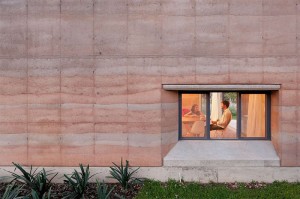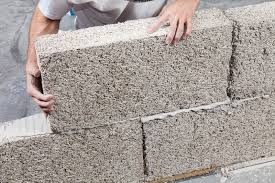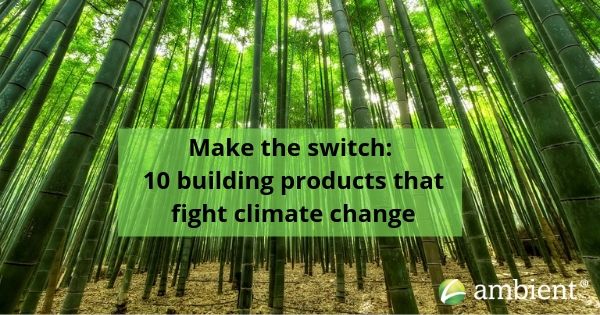Below is our list of 10 sustainable building products that fight climate change.
1. Bamboo Flooring
There are so many factors threatening the planet in these modern times, and it is our obligation to do what we can to take care of the planet. Using sustainable building products is a great way to reduce your carbon footprint. When you use bamboo flooring as a building material, for example, instead of other types of wood, you are helping the planet by not using up the trees that are so vital to the health of this earth.
Bamboo is a grass, not a tree, and it grows extremely quickly in comparison to trees. In fact, it’s the fastest growing plant on earth, with one type of bamboo growing a record 35 inches daily. This incredible growth rate allows bamboo harvesting every five years. It is an eco-friendly and building material that is strong, easy to grow, and it leaves no ecological footprint from harvesting.
Bamboo can literally be used to make anything that you can make from hardwoods. The only difference is that bamboo goods will cost less and be more durable. As a building material use bamboo for floors, scaffolding, tools like drills and mallets, furniture, and much more.
2. Magnesium Oxide Boards (MagPanel Boards)
Another extremely eco-friendly building product that is gaining popularity is called MgO Board, also known as Magnesium Oxide Boards or MagPanel. MgO is a type of cement made from the minerals magnesium (chemical symbol Mg) and oxygen (chemical symbol O). It exists in huge underground deposits in a few areas around the world, but mainly in Asia. There is enough MgO available to make MagPanel for centuries to come.
Considered a green product, MagPanel has none of the harmful toxins: formaldehyde, asbestos, silica. It’s even manufactured at a low, ambient temperature. Considered a negative CO2 product, it actually absorbs CO2 instead of emitting CO2 – definitely good for the environment. MgO Board is engineered in such a way you don’t have to worry about mold, mildew, insects, fire, water damage, or leaving an environmental footprint.
MgO Board really is an incredible product. It allows safe and easy installation and is resistant to extreme temperatures and humidity. It’s used in a variety of construction applications including ceilings, facia, firewalls, tile backing and underlayment, sheathing for wood or metal stud walls, facings for structural panels, and substrates for coatings and insulated systems.
3. Reclaimed Wood
An effective and potentially cost-saving choice when using sustainable building products is reclaimed wood. Reclaimed wood is simply wood that has been previously used in another capacity and then salvaged for use for a different project. The use of reclaimed wood harms no trees and has little or no effect on the environment. Also, wood and the production of wood materials are responsible for fewer greenhouses (GHGs) than most other traditional building materials like brick, concrete, and certain metals.
Most reclaimed wood comes from the restoration or demolition of buildings or structures and is very often in excellent condition. New wood is still a great product and better for the environment than other building materials, but the production of wood materials does involve cutting down trees. This is bad for the environment because trees are responsible for gobbling up harmful carbon and carbon compounds and then converting them into healthy oxygen. When you factor in the fuel used for transportation, the heat from the transporting truck, and the energy used to process the wood into the sustainable building products, new wood does leave behind an ugly footprint. By using reclaimed wood, forests remain intact, carbon levels in the atmosphere aren’t raised, and the greenhouse effect isn’t increased.
4. Recycled Non-Wood Materials
Some traditional building materials are now available in recycled form. Materials such as steel and tile can now be recycled and reusing them is a means of keeping them out of landfills and reducing their negative impact on climate change.
Some architects are taking buildings to new heights by using other types of recyclable materials in the building process. Items like plastic bottles, metals, smart glass, industrial hemp, and containers can be used in the construction and interior design of buildings.
5. Rammed Earth
Rammed earth is a precisely controlled technique for constructing foundations, floors, and walls using natural raw materials such as sand, clay, chalk, lime, and gravel. The results are stone-like structures that are load-bearing, water-resistant, and long-lasting. Most of the energy used to create rammed earth construction comes from the quarrying and transportation of the materials. If the materials can be quarried on-site, then that is the optimal solution.
One of the key benefits of rammed earth is its ability to store heat. When temperatures fluctuate outside the thermal mass of rammed earth can give you heat when you want it and store it when you don’t want it. The downside to the thermal mass is it won’t stop heat it only slows the process. However, with a careful design rammed earth can be a fantastic building material.

6. HempCrete
In 2018, the Farm Bill changed federal policy regarding industrial hemp and considers hemp an agricultural product. Hemp is extremely versatile and can produce several products. For the building industry, hemp is a great material to use for insulation, flooring, and hempcrete for construction. It is a carbon-negative material that is eco-friendly and completely recyclable. Hempcrete is made from hemp, lime, and water. It is waterproof and fireproof as well. Although it is recyclable, it will not rot when it is above ground.
Hempcrete uses little energy for transporting as the blocks are very lightweight. Hemp is a fast-growing plant and quickly renewable.

7. AshCrete
AshCrete is another alternative to concrete and cement and is made of fly ash, which is a very fine powder and a byproduct of burning pulverized coal in electric generation power plants. When mixed with lime and water, fly ash forms a material similar to Portland cement. Fly ash can be an ingredient in building materials and is also common in paving and road construction materials. It is much lighter than cement and pours easier.
Fly ash requires less water to create than Portland cement and offers many other benefits. It is cold weather-resistant, is a non-shrink material, produces a dense concrete with a smooth surface and sharp detail, reduces cracking problems, and reduces the heat of hydration.
8. Timbercrete
Timbercrete is a sustainable building material of a mixture of sawdust and concrete. It is much lighter than concrete, so the transportation emissions aren’t as high as with concrete. Sawdust is a waste product in construction and using it as part of the mixture replaces some of the high-energy components of traditional concrete. As a sustainable building material, Timbercrete comes in the form of blocks, bricks, and pavers.
9. Glass Concrete Polymer
Most recently, researchers have discovered how to make concrete using recycled glass, which is an effort to turn waste into industrial flooring. The glass in the mixture replaces sand as it is ground down into the sand. Other uses include parking lots and roads. Substituting sand with recycled glass produces a stronger polymer cement. A polymer is water-resistant and is ideal for areas with heavy traffic such as service stations, retail malls, and airports.
10. Ferrock
The steel industry is the source for a newer green product called Ferrock. Up to 95 percent of Ferrock’s composition is recyclable materials including steel dust, which makes it stronger, more flexible, and less expensive than concrete. It is also carbon negative because it absorbs and binds CO2.
The discovery of Ferrock is all thanks to David Stone. While obtaining his Ph.D. in environmental chemistry at the University of Arizona in Tucson, he made this discovery of the unique material after an experimental failure. Stone thought the material might serve as a more environmentally friendly alternative to cement. Ferrock gets its name from its composition of an iron-rich ferrous rock. The primary ingredient is waste steel dust that comes from industrial processes and silica from the ground up glass. The iron within the steel dust reacts with C02 and rusts to form iron carbonate. Once it forms into Ferrock people cannot change it back into a liquid. This material is five times stronger than cement, can withstand a higher compression, and becomes even stronger in saltwater environments.
Conclusion on Sustainable Building Products
The more development that continues in the world, the more devastating the effects on the environment. Responsible development using environmentally-friendly materials has become a necessity for responsible growth.
Are you ready to make a positive impact? Consider bamboo flooring for your home renovation or building project. Ask for your free samples today.

About the Author
Meet Jo Lynn! 🌿🧹 With more than a decade of eco-cleanliness expertise under her belt, Jo Lynn is on a mission to turn spaces into healthier, greener sanctuaries. Her journey into sustainable home maintenance started with a deep love for the environment and a determination to whip up non-toxic solutions that actually work.
Whether it’s a cozy home or a bustling office, Jo Lynn knows how to keep spaces spotless without compromising your health or our planet’s well-being. Plus, rumor has it, her cleaning jokes are so good, even the dust bunnies can’t help but chuckle! 😄


